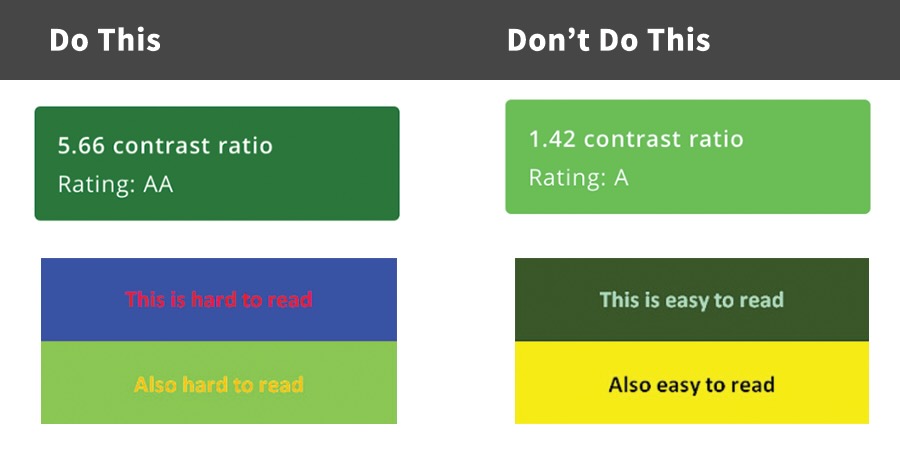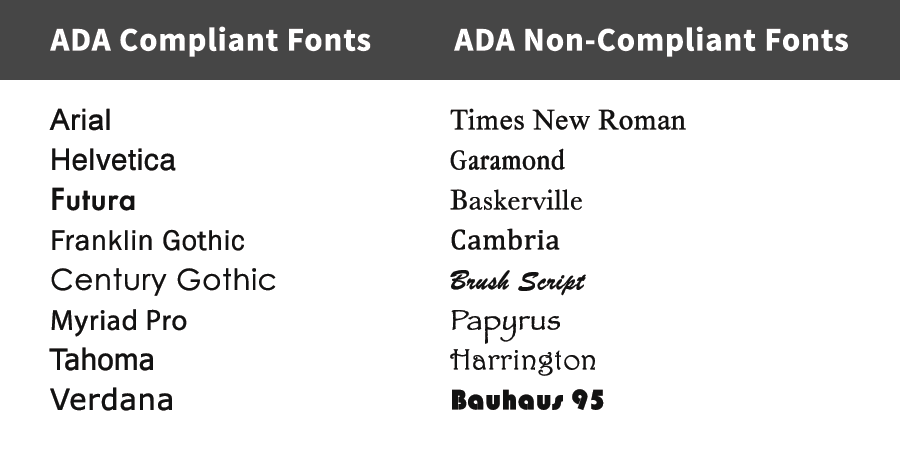How an ADA compliant website can help your business survive COVID-19

ADA Compliance | Business
Staying distant to stay safe continues to be our best defense against the coronavirus. However, it's that same motto that continues to put immense pressure on businesses to either adapt to this new, socially-distant way of living or risk becoming another casualty in this worldwide pandemic. Now, nearly five months from the beginning of quarantine, many businesses are just starting to reopen, but it's far from business as usual. Many small and local businesses are struggling to compete with online retailers and scrambling to beef up their online presence.
Whether the pandemic caused you to shutter your doors sooner than expected or you suddenly found yourself entering the highly-competitive e-commerce space, these past few months have undoubtedly been difficult on business owners. Unsurprisingly, lockdowns and restrictions across the nation have resulted in a major boost in screen time, with some individuals reaching as high as eight hours a day, according to this Washington Post article from March. What does that mean for your business? More people are online looking at your website and relying on user-friendly web experiences than ever before. So, if you're not up to speed on accessibility guidelines, now's the time to start.
What is an ADA compliant website?
The Americans with Disabilities Act (ADA) was passed in 1990 to prohibit any discrimination against people with disabilities. Having a website that's ADA compliant means your business's site meets ADA standards for accommodating those who are blind, deaf, or motor disabled. According to their website, there are two ways to know if your business has to comply with ADA rules:
- Under Title I: If your business has a minimum of 15 full-time employees that operates for 20 or more weeks every year.
- Under Title III: Any business that is considered a "public accommodation," i.e. hotels, banks and public transportation.
Why is accessibility especially important during the COVID-19 pandemic?
People are relying on the web to survive. Everything from groceries to home goods is just one click away and people across the country are opting to do everything from the comfort and safety of their own homes. While brick and mortar stores are used to installing ramps and door push buttons to make their business accessible, e-commerce stores and online businesses rarely think about doing the same for their customers and clients. However, a quarter of U.S. adults live with some form of disability. That means only ¾ of the population can use your website if it isn't built to be accessible.
Making your website accessible to everybody will widen your reach and boost your business. It will also showcase your brand as one that cares about others and will go out of its way to be inclusive. The more people you can reach, the bigger impact you can have.
How do you make your website ADA compliant?
What is required for ADA website compliance? Well, this is where things get a bit tricky. There's no defined set of standards to create an ADA compliant website. While the Act is very clear about equal access in a "place of public accommodation," it remains ambiguous where online spaces factor into the equation. However, it is widely understood that websites should be included when making a business accessible, and various courts in the U.S. have ruled that websites are considered "places of public accommodation," therefore they fall under the ADA's rule.
Without a checklist from the ADA on how to make your website comply, many businesses turn to the Web Content Accessibility Guidelines (WCAG). The WCAG is constantly being updated (the most recent version is 2.1) and there are three conformance levels: A, AA, and AAA. The requirements for WCAG are based on four principles, each containing its own set of guidelines:
- Perceivable - Your website must ensure users can use three senses: sight, touch and sound, to experience the website. An example of a site being perceivable is to make sure the fields in an online form are readable so anyone is able to navigate through them.
- Operable - You're obligated to help those with motor disabilities by setting up efficient keyboard-only navigation, getting rid of time limits throughout the site, helping with errors on forms and more.
- Understandable - You must create a simple and easy-to-use site that isn't bogged down by complexities or inconsistencies. One of the features of an understandable site is its ability to indicate different languages so assistive technology can read all content.
- Robust - You have to use clean code so web browsers and screen readers can do their job. A robust site ensures its content can be run on all web browsers so everyone can experience the site features.
Read the full guidelines to understand what other modifications are necessary under each principle.
How do I update my own site?
Something to note is that many of the best practices we know about search engine optimization are also true for ADA compliance. For example, easy navigation, alt text on images, transcripts, and internal site searches are among the best practices for both SEO and ADA compliance. If you design your site with ADA compliance in mind, you will improve your overall user experience which Google will recognize and take into account when ranking your site in searches. Once you understand the basics of what it means to create an accessible site, it's time to get started on making sure your business has one. Below is a checklist to assess your own website.
- Run an audit: First things first, take a look at your site. Test it out using only your keyboard and check out the screen reading options. Take note of every glitch and blip as you navigate through the site. After you've poked around manually, run your URL through a tool like WAVE which checks for WCAG failures and also adds a human evaluation.
- Alt tag your images: Alt tags, also known as alt attributes, is alternative text that describes what an image on your site is showing. It is best practice for ADA to have alt tags for every image on your site. Even though a lot of people don't see alt tags on images, they're crucial for screen readers, voiceovers and other tools to explain elements of the web page to many users. These don't have to be too long, but ensure you're providing an accurate description of the image so everyone can access the features of your site. The good news is that having alt tags in place will also help your site's SEO.

- Go behind the scenes: Check out your website's code to make sure everything is up-to-date. Messy code can get in the way of screen readers and other tools.
- Use best practices for web copy: Don't go overboard with the convoluted or highly technical language. Simple conversational text performs best for SEO and for accessibility purposes. It helps tools scan the page for content and makes it generally easier to understand. Use headings and subheadings where possible and ensure you're using hyphens, periods and other punctuation appropriately so screen readers can accurately read the text.
- Keep your font and style clean: Choose fonts, colors and styles that are easy for all users to read. Don't choose tiny fonts, poor contrast ratios, or other features that might make the copy hard to read.


How many businesses are ADA compliant?
Unfortunately, not as many as you would hope. A 2019 study by AccessiBee analyzed 10 million pages. They found 98% of websites failed based on their menu pages when held to WCAG standards. This means almost all of them provided inadequate navigation options for keyboard-only page visitors.
What happens if you fail to comply?
There could be some serious consequences if your business fails to comply with ADA guidelines. UsableNet reported 2,285 ADA website compliance lawsuits filed in federal courts across America in 2019. Even the world's biggest names weren't immune to getting served. These ADA website lawsuits could cost businesses up to $1 million, which in the middle of a pandemic, is a nightmare. Making your website ADA compliant is a simple fix that could save you hundreds of thousands of dollars down the line.
Putting in effort to make your website ADA compliant will benefit your business in the long run. Even if you haven't gotten into any trouble thus far, there's always room to improve and be more inclusive. Don't wait to make these upgrades or you'll miss out on the opportunity to reach new customers and you could risk losing existing ones. Even as states start to reopen and businesses start welcoming people back in person, there will continue to be those who choose to stay home. America has made so much progress in terms of providing goods and services online that we can never go back to the way things used to be. The only way to stay ahead of the competition is to make these changes now while people are still adapting to the new normal. There has never been a more pertinent time to give your site (and your business) an internal makeover.
Not sure whether your site is accessible? There are plenty of tools online to help, like WAVE, SortSite, or Accessibility Insights for Web. If you find your site does need a refresh or you're starting a new site, contact us to learn more about our web design process. Our team designs and develops websites with ADA compliance in mind. You won't have to worry about digging through the backend of your site for missing tags and confusing code. We'll help you clean up your site and meet the guidelines so your business can not only survive, but thrive during and post-COVID-19.